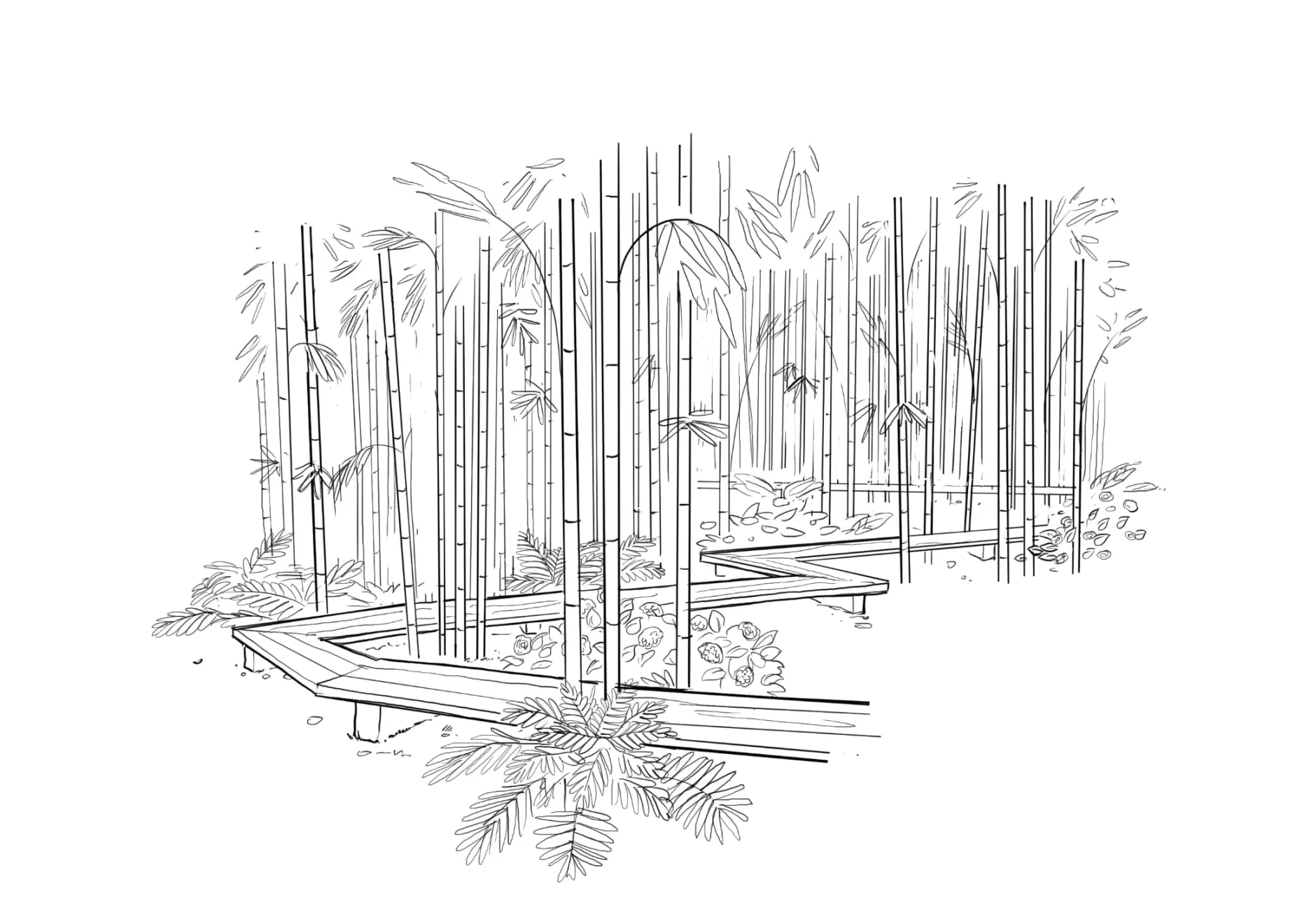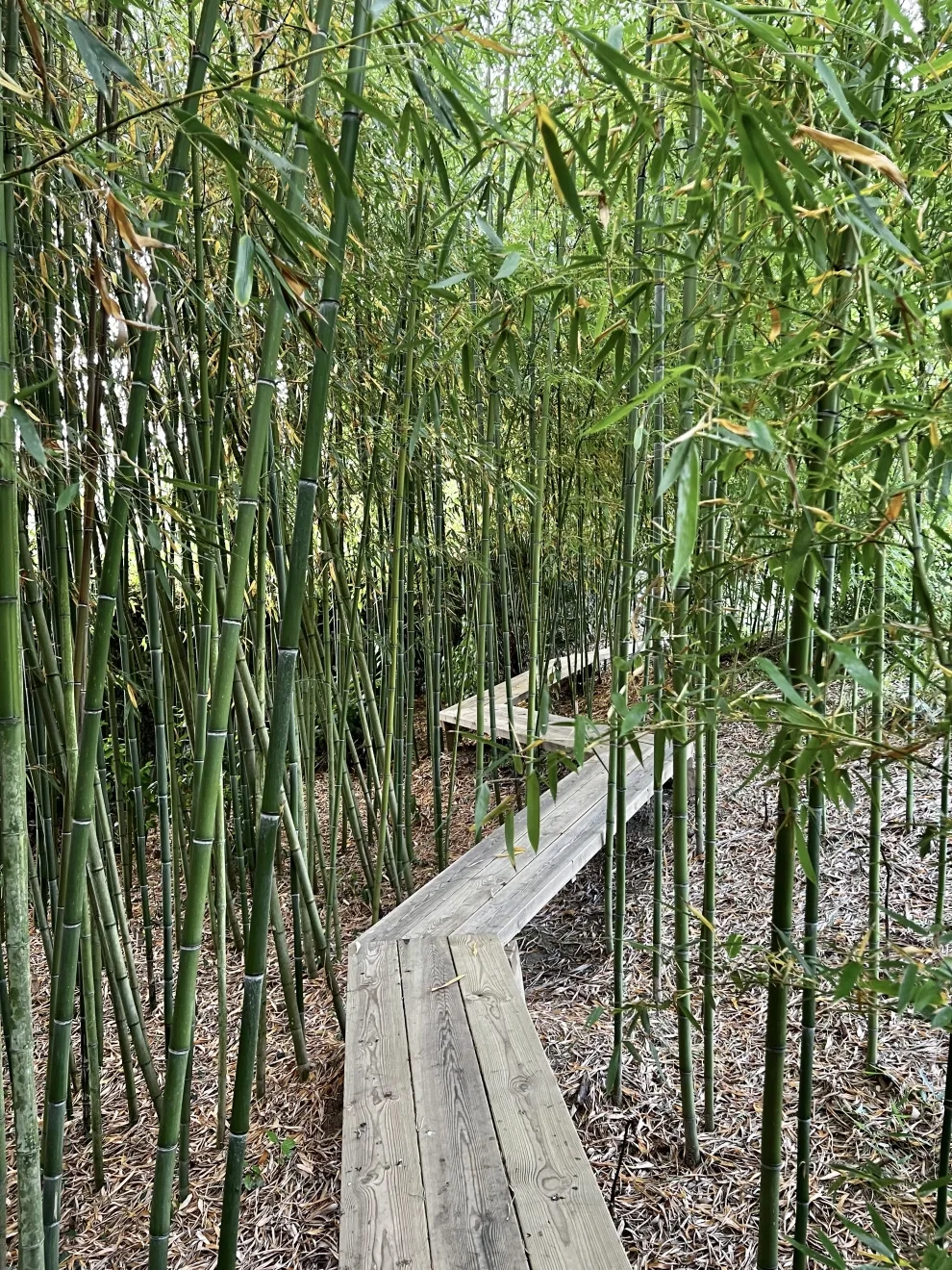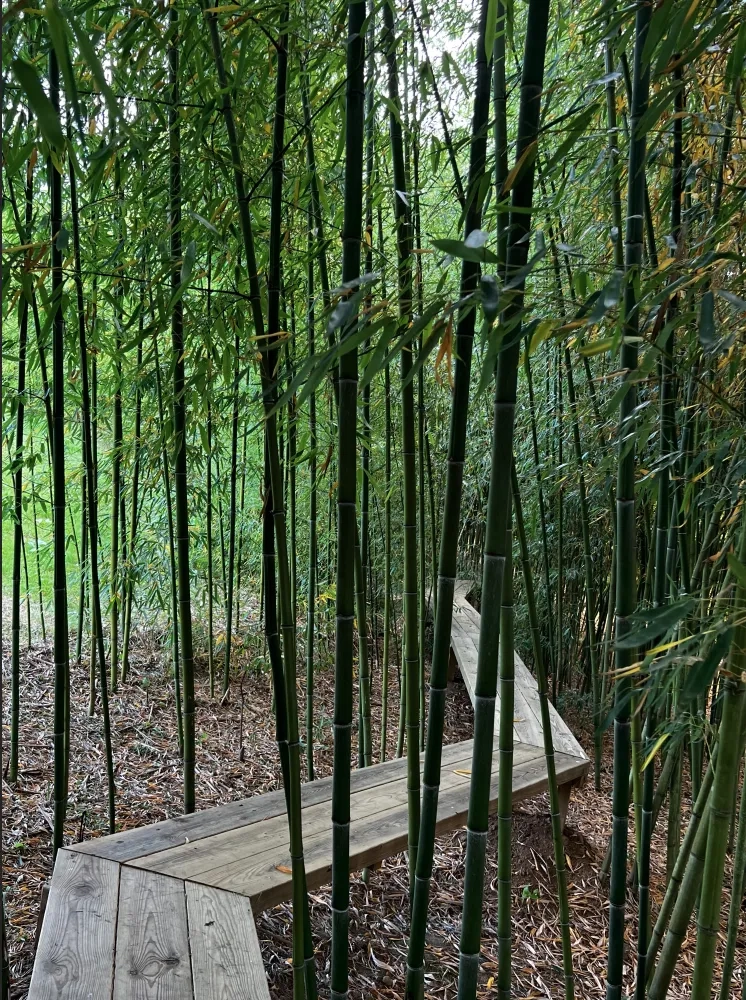Designing a bamboo grove
This elevated structure built within the forest not only physically guides the user through the designed environment but also takes them on a conceptual journey.
Date
December 2023
Type
Projects
The Bamboo Forest incorporates an elevated walkway that winds through the stalks, allowing the user to immerse themselves in the forest with minimal intervention on the terrain. This wooden structure follows a path that takes advantage of the natural rhythms of the forest, offering different viewpoints and stimulating the sense of exploration. The sound of bamboo swaying in the wind, along with the chirping of birds nesting in the forest and the sunlight filtering through the stalks, combine into a complete sensory experience. At night, the lighting enhances the pathway, providing safety and highlighting the natural beauty of the garden.
This elevated structure not only physically guides the user through the designed environment but also takes them on a conceptual journey. The walkway seeks to emphasize how constraints impose a viewpoint on the user's experience, both in their movements and in their perception of the landscape. Unable to stray from the established path, visitors are compelled to interact with the bamboo forest from the perspective that the landscaper has deemed optimal, both in visual and sensory terms.
Through this analysis, the walkway becomes a physical manifestation of how paths can be designed to influence the journey's experience, not only allowing transit but also shaping people's perception and interaction with the space. This journey invites the user to consider not only what they see and experience but also to question how a pre-established structure can affect their understanding of the environment. The walkway thus acts as a mediator between the visitor and the world, offering a curated experience that reflects a fascinating tension regarding the concept of freedom.
With this approach based on anthropologist Tim Ingold's reflections on the importance of the path in human experience, our team highlights the capacity of landscaping to create spaces that enrich our interaction with the environment.

ABOUT TIM INGOLD
Professor Emeritus of Social Anthropology at the University of Aberdeen, has significantly contributed to the study of the relationships between humans and their environment, focusing on how these interactions shape our ways of knowing, perceiving, and living in the world. His research explores concepts such as environmental perception, materiality, and life in relation to the landscape, proposing a more integrated view of culture, nature, and society.
In Lines: A Brief History, he explores how paths are formed and experienced in nature, not only as physical connections but as lived experiences woven through interaction with the environment. Ingold speaks of environmental perception as a continuum in which we are immersed, emphasizing the importance of direct sensory experience in our understanding of the world.

Ingold, T. (2011). Being Alive: Essays on Movement, Knowledge and Description. Routledge. Ingold explores the relationship between knowledge, thought, and description in lived experience, providing an interesting perspective on how humans relate to the world around them.
Ingold, T. (2013). Making: Anthropology, Archaeology, Art and Architecture. Routledge. Ingold argues that the ability to make things (making) is at the heart of what it means to be human and examines how different forms of creativity manifest through everyday practices.
Ingold, T. (2006). "Rethinking the Animate, Re-Animating Thought". Ethnos, 71(1), 9-20. A critique of traditional conceptions of "animation" and suggests alternative ways of understanding life and consciousness in relation to the world.
Ingold, T. (2010). "The Textility of Making". Cambridge Journal of Economics, 34(1), 91-102. Ingold introduces the concept of "textility" to explore how the process of making (making) intertwines with perception and lived experience.
Ingold, T. (2004). "Culture on the Ground: The World Perceived Through the Feet". Journal of Material Culture, 9(3), 315-340. Ingold examines how the experience of walking and the perception of the ground under our feet influence our understanding of the world.


